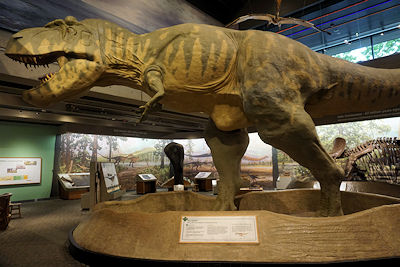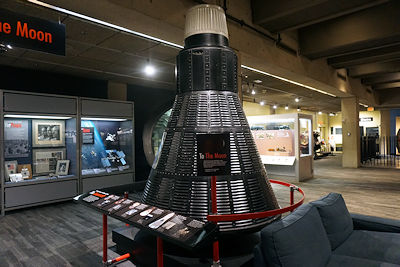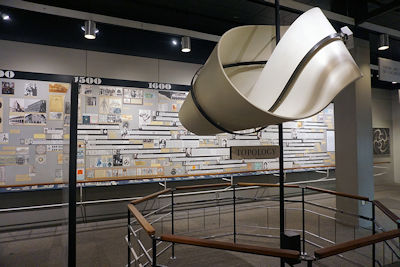
Boston, Massachusetts, is one of the oldest communities in the United States, having been founded by Puritan settlers in 1630 and named after the small English town from which they originated. Boston was likewise the first American enclave to rebel against English rule, with many of the key early events that led to the American Revolution taking pace there.
Given its history, it should be no surprise that the Massachusetts enclave was also one of the first within the United States to embrace the natural history of the Americas as opposed to Europe, and an early proponent of the importance of science in the contemporary world as well.
The study of natural science first embedded itself in Boston society in the early 1800s through “learned societies” that were likewise sprouting up in other cities across the country. Dedicated to a deeper understanding of the world around them, these groups of educated men traded books, conducted their own research, discussed the latest scientific discoveries, and even displayed objects from their own personal collections.
In Boston, this collection of natural history enthusiasts were known as the Linnaean Society of New England. Established in 1814, the organization was named after Swedish naturalist Carolus Linnaean, who is considered the “father of modern taxonomy.” The Linnaean Society created the earliest natural history exhibits in Boston – “cabinets of curiosities” that resembled the times – but disbanded in 1823 when it became too much for what were essentially “volunteers” to manage on their own.
The Boston Society of Natural History was founded from the ashes of the Linnaean Society of New England in 1830, holding meetings twice a month and establishing a museum from the members’ collections that was initially open to the public one day a week. Its location bounced around Boston, including several buildings in the Financial District, before finding more stability as the New England Museum of Natural History in the Back Bay section of the city in 1864.
By the late 1800s, natural history – and science in general – began transforming from mere curiosities and the hobby of “learned men” into a profession and field of higher education in its own right. At the same time that the Boston Society of Natural History relocated to Back Bay, Harvard University launched the Peabody Museum that was overseen by university professors as opposed to volunteers. Embracing the change instead of remaining stagnant, the Boston Society of Natural History evolved from its research-oriented focus of the past to a more educational focus aligned with the times.
In 1939, the New England Museum of Natural History hired American explorer, mountaineer, photographer, and cartographer Bradford Washburn as director. Washburn not only expanded the mission of the museum to include all sciences instead of just natural history but also negotiated a 99-year lease with the Metropolitan District Commission for a tract of land along the Charles River Dam Bridge at a cost of one dollar a year. Once again renamed, the Museum of Science moved to its current location in 1951, with the Charles Hayden Planetarium added to the facility in 1958.
The scope of the contemporary Museum of Science now includes numerous fields, from natural environments and zoology to paleontology and astronomy, engineering and mathematics to biology and energy. Other museums across the country may have larger collections and exhibits within each of those individual fields, but few share the same breadth of multiple fields that one finds at the Museum of Science in Boston.
Although its dinosaur gallery may be smaller than those found in the natural history museums of Chicago, Los Angeles, and New York, for instance, the Museum of Science’s Modeling the Mesozoic exhibit contains just as much detail about the Jurassic world nonetheless, with analyses of how fossilized bones, embedded “footprints,” and even dinosaur “poop” enable scientists to not only recreate the appearances of dinosaurs but how they interacted socially, cared for their young, and lived their daily lives.
While the Field Museum in Chicago has Sue the T. Rex and the Carnegie Museum in Pittsburgh has Dippy the Dinosaur, the Museum of Science in Boston likewise has its own world-renowned fossilized specimen in Cliff the Triceratops. Discovered in the Hell Creek Formation of the North Dakota’s Badlands, the 22-foot long Cliff is one of only four nearly-complete Triceratops ever found – as well as the only one ever put up for auction.
Although museums around the world expressed interested, Cliff ended up in the hands of a private collector who paid close to one million dollars for the specimen in April 2008. Shortly afterwards, however, the buyer contacted the Museum of Science and offered the Triceratops as a donation. There were two strings attached – first, that the native Boston benefactor remain anonymous, and second, the Triceratops be named Cliff after his grandfather.
The Museum of Science is also home to Mathematica: A World of Numbers… and Beyond, a replica of a 1961 exhibit created by Charles and Ray Eames – in conjunction with IBM – for the California Museum of Science and Industry. A duplicate was crafted that same year for the Museum of Science and Industry in Chicago, which was then relocated to Boston in 1980 and has been on display at the Museum of Science ever since.
Designed to highlight the “beauty and wonder” of mathematics, Mathematica contains a lengthy timeline of mathematical achievements that is complemented by interactive and automated mechanical devices that mimic Moebius strips, gravitational wells, and Klein bottles – each directly related to such branches of mathematics as topology, algebra, geometry, calculus, and logic.
In 1939, the Boston Globe published a photograph of Massachusetts’ Governor Leverett Saltonstall operating the first interactive exhibit at the New England Museum of Natural History, a device “designed to show weasels changing their Summer coat of brown to a Winter coat of white. The transition involves the use of mirrors, and yesterday the New England Museum became the first in the world to make use of it for educational purposes.”
From that simplistic beginning, educational exhibits at the present day Museum of Science have evolved into three-story apparatuses that emit lightning bolts stretching fifteen feet long and electrical devices that can propel aluminum cans twenty feet in the air. Demonstrations are conducted throughout the museum on any-given day, centered on everything from live animals, cutting-edge research, and various fields of science.
No longer a “cabinet of curiosities” from the 1800s, the Museum of Science of the twenty-first century is instead a curiosity in-and-of itself – as well as the perfect destination for anyone interested in the various fields of science and all they have to offer.
Anthony Letizia





